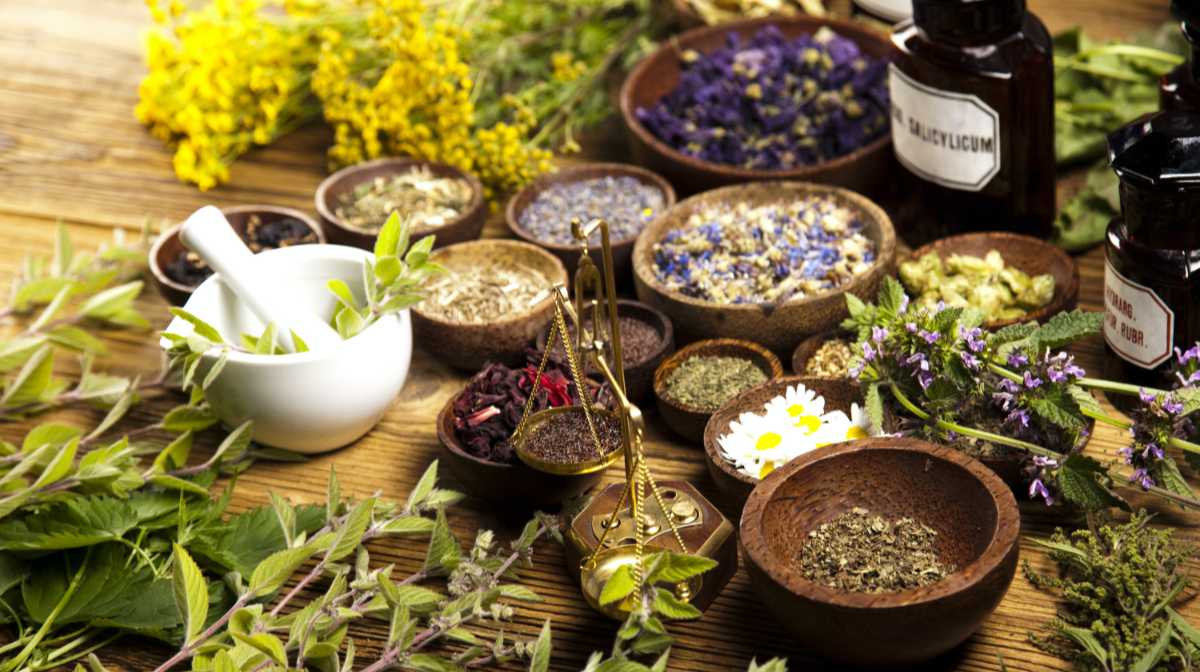Glanzmann Thrombasthenia is an abnormality of the platelets. It is an extremely rare coagulopathy (bleeding disorder due to a blood abnormality) in which the platelets contain defective or low levels of glycoprotein IIb/IIIa (GpIIb/IIIa) which is a receptor for fibrinogen. It is a congenital hemorrhagic disorder, i.e. a disorder which is present from the time of birth.
Ayurvedic Aspect
Bleeding disorders are collectively called as Raktapitta in Ayurveda.
The intake of Ushna (warm), Theekshna (penetrative), Kadu (hot), Amla (sour) Lavana (salty) and Vidahi (causing internal burning sensation) foods in excess leads to the vitiation of Pitta and Blood (Rakta). The vitiated blood together with Pitta flows out from the circulating paths and results in excessive bleeding through the nose, eyes, ears, mouth, penis, vagina or anus and even through the hair follicles.
Ayurveda texts specifically mentions that the Garbha Charya of mother while conceiving a baby or during the Maithuna (sexual intercourse) can even lead to some serious disorders in the new-born.
It is be noted here that Glanzmann’s disease is a congenital disorder and there is no specific etiology for it other than the mutation of the gene. Also, Raktapitta is bleeding without trauma or internal injury. Even Sushrutacharya does not mention trauma in the etiology of Raktapitta.
Causes:
Mutations in the ITGA2B or ITGB3 gene is said to cause Glanzmann Thrombasthenia. Glanzmann Thrombasthenia is an autosomal recessive condition. In other words, both parents of an individual must carry the defective gene or genes for Glanzmann for him or her to inherit the disease. If there is a family history of Glanzmann’s disease or other related disorders, there is an increased risk of inheriting the disorder or passing it on to the children.
Doctors and scientists are still researching what exactly causes Glanzmann’s disease and how it can best be treated.
Symptoms of Glanzmann’s Disease:
Glanzmann’s disease may cause severe or continual bleeding, even from a minor injury. People who have the disease may also experience:
- Frequent nosebleeds
- Easy bruising
- Red or purple spots on the skin caused by bleeding beneath the skin (petechiae)
- Swelling caused by bleeding within tissues (hematoma)
- Bleeding gums
- Heavy menstrual bleeding
- Bleeding during or after surgery
Raktapitta – Symptoms:
Along with excessive bleeding from various body outlets, the patient will also exhibit the following symptoms:
1. Sirogurutwa (heaviness of head)
2. Aruchi (tastelessness)
3. Seethecha (desiring cold)
4. Dhoomaka (feeling that the body is exposed to extreme hot weather)
5. Amlaka (sour burps)
6. Chardhi (vomiting)
7. Kasam (cough)
8. Swasam (breathing difficulty)
9. Bhramam (vertigo)
10. Klamam(tiredness)
11. Loha lohitha matsya aama gandha aasyatwam (metallic, fishy, or undigested food tastes in the mouth)
12. Swarakshayam (loss of voice)
13. Rakta hardira harithavarnatha nayanadishu (reddish-yellowish or greenish discoloration of eyes)
14. Neelalohitha peethavarna avivechanam (not being able to distinguish blue, red and yellow colours)
15. Swapne thadvarna darshitwam (dreaming of blue red or yellow colours)
Diagnosing Glanzmann’s Disease:
The following simple blood tests help to diagnose Glanzmann’s disease:
Platelet aggregation tests: to see how well the platelets clot
Complete blood count: to determine the number of blood platelets the patient has
Prothrombin time: to determine how long it takes for the blood to clot
Partial thromboplastin time: another test to see how long it takes for the blood to clot
Frequency:
Glanzmann Thrombasthenia is estimated to affect 1 in one million individuals worldwide.
Prognosis
Glanzmann’s disease is a lifelong condition, and there is no cure.
Ayurveda has a specific prognosis for diseases along with the treatment line.
Ayurveda specifies that only those bleeding disorders (Raktapitta) which occur through the nose, eyes, ears, and mouth which occurs to Balavan (healthy individuals with good immunity) can be cured.
Adhoga raktaputta (excessive bleeding through anus, penis or vagina) can be managed with medicines and good diet or exercise.
Raktapitta which occurs through all parts of the body and which occurs in Mandagni (people with extremely less digestive capacity) cannot be cured.
Prevention
As Glanzmann’s disease is an inherited condition, there is no known prevention.
Treatment:
Modern medicine does not have a specific treatment for this disorder. Platelet transfusions may be given to people who are having severe bleeding.
Ayurvedic treatment line:
If the patient is healthy and having a compatible immune system, it is not advisable to immediately arrest the flow of any blood at the outset of the disease. Such a procedure can lead to occurrence of Pandu (anaemia), Grahani, Kushta (dermatological disorders), Gulma (digestive disorders), Jwara (fever) or Pleeha (spleen enlargement).
Patients with strong and compatible immune system should be treated with Emetic (Vamana) medicines if the blood makes a downward course and with purgatives (Virechana) if blood makes an upward course.
Virechana can be induced with a combination of Draksha, Yashtimadhu, Kashamrya, and Sugar. Vamana can be induced with an emetic compound consisting of Yashti-madhu and Honey.
A weak patient should be treated in both cases with Samana dravyas.
Langhana (fasting) should be first used in the case of excessive blood discharge in a strong patient with unimpaired digestion and compatible immune system. A Peya prepared with a small amount of rice should be administered after Langhana.
Diet:
- Foods dominant in Tikta and Kashaya Rasa and Tarpanam for Oordhwaga Raktapita
- Madhura Rasa and Peya in Adhoga Raktapitta
- Milk
- Jangala mamasa rasam (the essence of Jangala animal meat)
- Draksha (Raisins)
- Sarkkara (Jaggery)
- Aamla (Gooseberry)
- Pomegranate
- Cherries
- Bitter gourd
- Rice
- Cucumber
- Melon
- Water with Usheeram (vetiver) can be used for external use and drinking
Yoga
- Shavasana
- Padmasana
- Parvathasanam
- Shashangasanam
- Shalabhasanam
- Veerasanam
- Ardha chakraasanam
Medicines:
- Vrisha ghrutham
- Usheerasavam
- Drakshadi kashayam
- Vasa swarasam / Vaasa kashayam
- Vasaguloochyadi Kashayam
- Patolakadurohinyadi Kashayam
- Lakshadi choornam
- Chyavanapraasham
- Indukantham ghrutham
Foods to be avoided:
Spicy food
Extremely hot food
Consumption of alcohol








